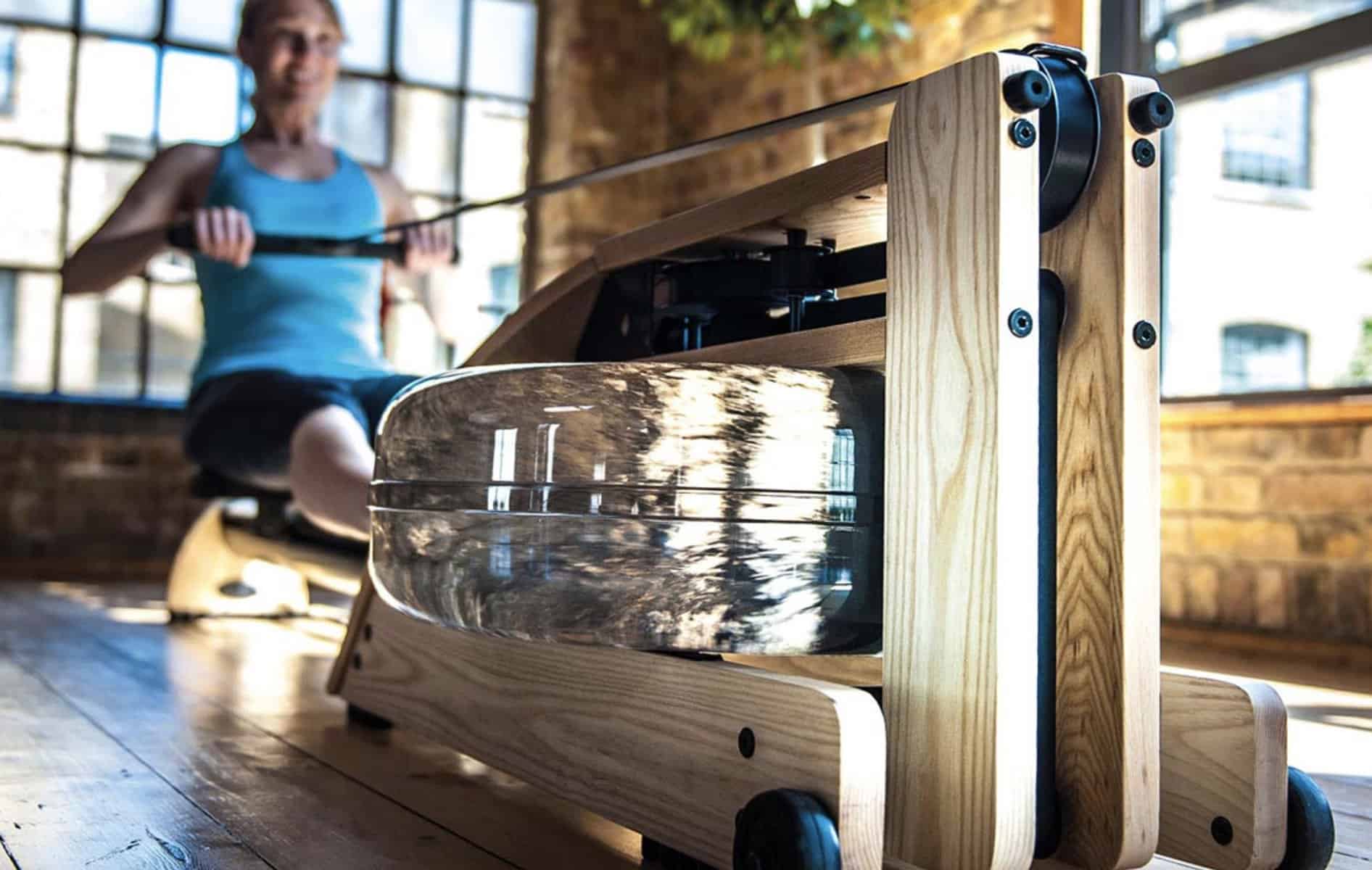
So you’ve been using your water rower for a while and you’re wondering how to clean the WaterRower tank!?
One of the best things about a water rower is that utilizing water provides a more natural feel and the relaxing sound of swishing water.
Of course, this is also its downside. If you don’t clean or change the water regularly, it’s going to start forming algae or mold inside the tank.
It’s getting to that time when I need to clean my water rower, so I figured I’d share some tips and tricks that have made the task so much easier.
First, I’ll show you how I clean my water rower tank. Including a step-by-step guide to the process. Then I’ll answer a few of the most commonly asked questions about water rower tank cleaning.
At the end, I’ll share with you some of the products I use to make the job a lot easier!
By the time you finish this article, you’ll know exactly how to clean the WaterRower tank and how often to clean it. You’ll keep the water in your tank beautifully clear—and, thanks to the regular maintenance, extend the lifespan of your water rower significantly.
How to Clean a WaterRower Tank the Right Way
Let’s start off with the absolute basics: how to clean a water rowing machine tank.
Water Purification Tablets
According to the WaterRower website, there is no need to clean the tank regularly. Instead, you’re supposed to add one of the provided water purification tablets every 6 months to keep the water clean. (Or, if the tank is sitting in direct sunlight, every 3-4 months.)
The WaterRower purification tablets contain Sodium Dichloroisocyanurate, which, when added to the water, creates chlorine on a very microscopic scale—just 2.6 parts per million.
These tablets are able to purify river or stream water, turning even dirty water into clean drinking water. However, the dirtier the water, the more tablets are required. The same is true for your tank. The more water in your rowing machine, the more tablets you’ll need to use.
You can order more purification tablets on the WaterRower website. You can also buy similar products on Amazon.
So, my first piece of advice is: If your tank is full, consider adding a second tablet.
Though the manufacturer only says to use one tablet (and you should always follow the manufacturer’s instructions), it’s possible that a full tank will need two tablets to purify the water thoroughly. With just one tablet, you might only kill off some of the pathogens (algae, bacteria, etc.) in the water.
Thankfully, you’re not going to drink the water in the water rower tank. You just want it to be clean and clear, which means the purification tablets just need to kill off the algae and bacteria.
Now, I get asked a lot, “What happens if I’ve been regularly using the purification tablets but the water is still turning dark and nasty?”
The answer: the tablets haven’t been able to stop the pathogens from multiplying, so the algae has spread and formed on the inside of your tank/in your tank’s water.
What Type of Water to Use?
On the WaterRower website, they state, “Make sure the water you have in your tank is not hard water.”
This brings us to my second piece of advice: Consider using bottled or purified water to fill up your tank.
Let’s be clear: WaterRower says to use MUNICIPAL TAP WATER to fill the tank because the tap water contains treatments to eliminate bacteria and algae.
The problem is that sometimes microscopic algae or bacteria particles survive the water treatment process. They’ll do you no harm if you drink them straight out of the tap, but if they’re allowed to sit in water that spends 20+ hours a day totally stagnant, they’ll multiply in your tank water.
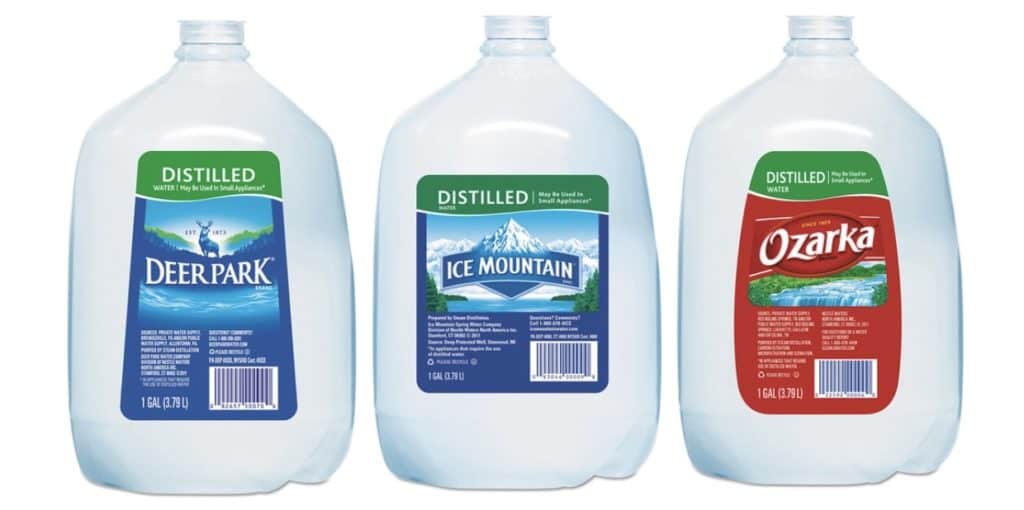
Using bottled or purified water will diminish this problem. You’ll still have to purify the water as recommended (using one tablet every 6 months), but there will be far less likelihood of algae or bacteria being present in the water.
Cleaning the Tank
“Okay, so I did all that,” you might be saying, “but the water is still cloudy/dark. What now?”
Well, if you used bottled/purified water to fill the tank and tried purifying the discolored water with the tablets to no effect, that’s when it’s time to clean the water rower tank.
By this point, the algae have firmly settled in, and the purification tablets won’t be enough to clear up the problem. Now is when you need to empty the tank, clean and rinse it, and re-fill it with clean, freshwater.
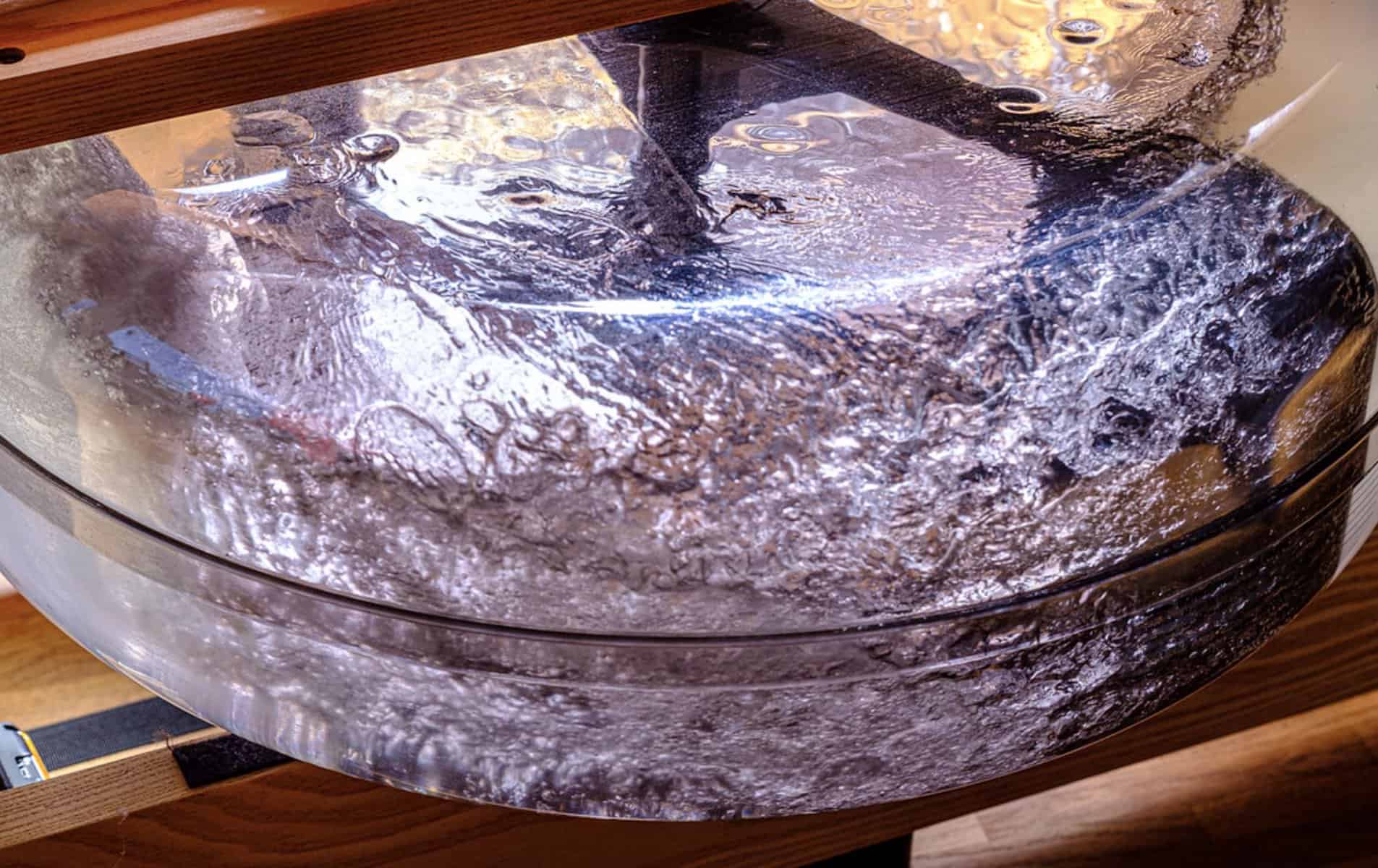
This is where my step-by-step water rowing tank cleaning guide comes in handy!
Step 1: Siphon the water out of the tank. The WaterRower siphon pump makes it easy to remove the water. However, you can use pretty much any siphon—like this popular Siphon Pump Kit—to do the job. Just keep siphoning out the water until the tank is as empty as possible.
Handy tip: For best results, once you finish the first siphon, let the tank sit for a few minutes to allow all the remaining water to pool in the bottom. Then give it one last pump to remove as much of the water residue as possible—that’s where all the algae are!
Step 2: Flush it with clean water. The cleaner the better! Consider using purified or bottled water. Or, if you know your municipal tap water is clean enough, use that.
Step 3: Drain and repeat. I like to flush and drain the tank 2-3 times, depending on how cloudy the water was when I emptied it the first time. Usually, three flushes will be enough to get rid of all the algae or bacteria built up on the inside of the tank.
Step 4: Re-fill and purify. Fill the water tank again with clean water, and drop in a purification tablet as recommended.
It’s a pretty simple process, all things considered. Having a few handy tools (as you’ll see below) can make the cleaning a whole lot easier, not to mention more thorough.
Can I Use Bleach for Cleaning WaterRower Tank?
We get asked this question a lot and for good reason. Bleach is one of the most effective cleaning agents to kill off the sort of bacteria and algae that inhabit places like water tanks.
Unfortunately, using bleach to clean out your water rower tank is a no-no. Bleach may actually weaken the polycarbonate tank and make it prone to cracks, leaks, and breakage.
Can I Use Pool Chlorine or Chlorine Tablets for Rowing Machine Tank Cleaning?
Pool chlorine liquid and chlorine tablets for water rowing machine tank cleaning should be highly effective, right? After all, if they can keep pools clean, surely they can do the same for a water rower tank.
Again, the manufacturer states in no uncertain terms: “NEVER USE POOL CHLORINE OR CHLORINE BLEACH in the tank”. The potency of pool chlorine—in both tablet and liquid form—could seriously damage the tank.
Interestingly enough, chlorine is already present in most municipal tap water. The water purification tablets are intended to prevent the breakdown of chlorine (caused by exposure to light) and protect the water in the tank. There’s just a small enough dose (2.6 parts per million) that it won’t damage the polycarbonate plastic.
Can I Use Baking Soda for WaterRower Tank Cleaning?
Nowhere in the manufacturers’ instructions does it warn against using baking soda, which leads me to believe it’s safe for use when cleaning the tank.
You see, the mixture of baking soda and water is actually proven to polish the plastic, clearing away any stains. Of course, it’s also highly effective at killing off algae.
To use baking soda to clean your WaterRower tank:
- Step 1: Empty the tank using the siphon.
- Step 2: Measure 2-3 tablespoons of baking soda. Mix with 1 gallon of water.
- Step 3: Pour the mixture into the tank. Then pull the handle a few times to swirl it around.
- Step 4: Let the baking soda mixture sit for about 10-15 minutes.
- Step 5: Flush with more clean water, siphon out, and repeat until the tank is clean.
Baking soda won’t damage the polycarbonate or weaken the tank’s structure. It just does a good job of cleaning it out and killing off algae and bacteria.
You don’t even have to do a thorough job of rinsing out the baking soda from the tank. A bit of baking soda residue will actually help the purification tablets work better and keep the water clean for longer.
Can I Use Rubbing Alcohol for Cleaning WaterRower Tank?
Rubbing alcohol is a highly effective germ and pathogen-killer, but is it safe to use in your polycarbonate WaterRower tank?
To know the answer to this question, we’ve got to do a little bit of scientific research into the effects of isopropyl alcohol on the chemical structure of polycarbonate. I won’t bore you with the complex answer, but I’ll share what I found in one post:
“Chemicals such as Isopropyl Alcohol and Ethanol have very little effect on the surface of the Polycarbonate.”
There you have it! The rubbing alcohol won’t damage the polycarbonate of the tank but will kill off the bacteria inside. You can feel free to use it to get rid of the algae and bacteria dirtying up your tank water.
To use rubbing alcohol to cleanse your tank:
- Step 1: Empty the tank using the siphon.
- Step 2: Measure 250 ml of rubbing alcohol. Mix with 1 gallon of water.
- Step 3: Pour the mixture into the tank. Then pull the handle a few times to swirl it around.
- Step 4: Let the mixture sit for about 5-10 minutes.
- Step 5: Flush with more clean water, siphon out, and repeat until the tank is clean.
Can I Use Ammonia for Rowing Machine Tank Cleaning?
Ammonia is another potent chemical often used to clean things around your home. Everything from electric ovens to bathroom tiles to carpets to glass.
But, as I was researching the effects of rubbing alcohol on polycarbonate plastic, the same post I linked above led me to this:
“Some chemicals very aggressively attack Polycarbonate. These chemicals include Toluene, Benzene, Acetone, and Ammonia to name a few. One interesting experiment to see the effect of these chemicals is to dip a small piece of Polycarbonate into some Acetone. Nothing visually appears to happen, but the surface does become plasticized. If the Polycarbonate is then washed in water, the water provides nucleating sites causing the surface to “crystallize”. The result is that the entire surface instantly turns white.”
It’s pretty clear to see that using ammonia in your polycarbonate water rowing machine tank is NOT AT ALL a good idea. It won’t just cause microscopic damage to the structure of the plastic tank, but it could actually ruin the tank completely.
Tips to Keep Your Water Rowing Tank Cleaner
Below are some of my top tips for keeping your water rowing tank clean:
- Set a reminder on your calendar or smartphone to check your water tank every 3 months. Even though you see the tank every time you row, you’ll often fail to pay attention to the cleanliness of the water. A reminder will help you keep an eye on things to make sure the water isn’t getting cloudy or discolored.
- Set a reminder on your calendar or smartphone to add in a purification tablet every 6 months. If the tank is exposed to direct sunlight, every 3-4 months. You need to stay on top of the maintenance in order to keep it clean.
- Cover your water tank to shield it from both sunlight and artificial light. Light is what causes the chlorine in the water to break down faster. When you’re not rowing, consider throwing a blanket over at least the tank to protect the water inside.
- Consider using an algae cleaner (see below) to kill off algae and keep your water cleaner for longer.
- When adding water, consider adding bottled or purified water rather than tap water.
- When removing water, make sure to disinfect and wipe down the tip of the siphon with a bit of bleach. The last thing you want is the algae from old dirty water to flourish in your tank once more.
Check out this video to help you understand the process of cleaning your WaterRower tank:
Products to Make WaterRower Tank Cleaning a Breeze
I’ve found a couple of tools that help make the tank cleaning a whole lot easier.
1) Buyplus Magic High Pressure Wand – I attach this to the end of a hose and use it to give the interior of the tank a quick rinse using high-pressurized water. It’s a great tool for getting rid of the slimy coating formed by algae on the inside of the tank.
2) Ontel Turbo Pump Automatic Liquid Transfer Pump – This battery-powered siphon pump makes it so much easier to fill the tank. [PLEASE NOTE – check the diameter of your tank hole and make sure this pump will fit for siphoning water out. The pump diameter is 1.69″]. It’s great for those occasions when I want to do a more thorough cleaning with multiple flushes/rinses. The built-in motor does all the work, so I don’t have to expend energy pumping as I have with the WaterRower siphon pump.
3) API Pond AlgaeFix – I like having this on hand to help me keep the algae from multiplying out of control. I can add a few drops in every few months to double down on the effectiveness of the purification tablets.
Water Rower Purification Tablets Alternative Options:
WaterRower uses the PuriTabs-brand water purification tablets. Even though ordering through their website is easy, the delivery time can be anywhere from 7-10 weeks! Far too late if your water is looking cloudy and in need of a cleaning TODAY.
Thankfully, Amazon has a few WaterRower purification tablets alternative choices that you can order if you’re in need of a quick solution:
P&G Purifier of Water – This is a liquid-based water purifier that’s typically used by hikers or trekkers to purify river/stream water to make it potable. One packet is enough to treat 2.5 gallons—definitely enough to clean out the water in your tank.
Potable Aqua Water Purification Tablets With PA Plus – These water purification tablets are “trusted by military and emergency organizations”. They can turn very contaminated water into drinking-safe water within just 35 minutes. And at under $8 for a bottle of 50 tablets, it’s definitely a budget-friendly choice.
Aquatabs – Aquatabs claim to be the “world’s best water purification tablets”. Even if they don’t live up to that hype, I’ve used them for my water rower and have seen that they do an excellent job of clearing up cloudy water and restoring my tank to sanitary conditions. $15 for a pack of 100 is definitely a reasonable price.
Are Rowing Machines a Good Workout?
Rowing machines are good for workouts since they train every muscle group in your body.
Whether you’ve equipped your home gym with a hydraulic rowing machine, flywheel rower, or a magnetic-resistance rowing machine, you can train knowing well you will benefit from a full body workout.
And that’s because a rowing machine uses both muscle groups in your lower and upper body to give you a total body workout.
As a result of training with the best rowing machine, you will have toned muscles with exceptional strength and mass.
So, let’s shift attention to how a rowing machine is good for a total body workout, shall we?
What Muscles Does a Rowing Machine Exercise?
A rowing machine exercises muscles in your lower body, upper body, and core. Despite this, most people think rowing machines and similar equipment for home workouts only train the muscles in your forearms.
But this couldn’t be further from the truth, as this is usually a misconception.
But home rowing works up to 75% of leg muscles and 25% of upper body muscles.
Specifically, a rowing machine works muscles in your lower body, such as the calves, glutes, and quadriceps.
Aside from training the muscles in your lower body, a rowing machine ensures you have strength in muscles in your upper body.
These muscles include abdominal muscles, obliques, and pecs. Additionally, the rowing machine will train your arms.
Therefore, you can perform a rowing workout to gain a full body workout, even if you’re not a competitive rower.
Can Anyone Use a Rowing Machine?
Yes, anyone can use a rowing machine. If there’s one clear thing, it is that you can add rowing to your workout routine irrespective of who you are.
And the best part is an indoor rowing machine achieves a full body exercise, unlike exercise bikes that primarily train your lower body muscles.
Even more impressive, you can use a rowing machine to train your lower and upper body muscles even if you have low vision.
At the same time, people with various fitness levels can also benefit from the total body workout from a rowing machine.
So, it doesn’t matter who you are; you can reap big from a rowing machine. Besides training your muscle groups, a rowing machine also decreases the fat mass in your body.
And this results in reduced cholesterol levels since your body will experience a decrease in total fat percentage in your body.
At the same time, training 5 days weekly for a period extending to 6 weeks strengthens your back as your trunk flexion improves with each rowing session.
Therefore, a rowing machine has profound benefits, even for people with low vision.
What Else Makes Rowing a Great Workout Routine?
A rowing machine also allows you to burn calories without putting pressure on your knees.
And this makes it an excellent exercise option if you suffer from osteoarthritis, a common arthritis form affecting the joints, especially the knee.
Since exercising with a rowing machine is a low impact workout that goes easy on your knees, your doctor might suggest it for active recovery.
Besides reducing the impact on your knees, a rowing machine also reduces joint torque (also called joint rotation).
Therefore, a rowing machine trains essential muscles in the body while minimizing the impact on your joints.
A Rowing Machine Is Also Meditative
Most people don’t realize that their bodies have a connection to their minds. With this said, your mind will also benefit from physical exercises.
Specifically, rowing machines provide calming benefits to your mind, even if you’re exercising with your rowing machine indoors.
A rowing machine achieves these benefits by triggering your body to release endorphin hormones in your brain to make you feel good.
As a result, you will experience a drastic decline in stress levels, which is a good thing. Therefore, rowing machines also provide the benefits of meditation.
A Rowing Machine Also Benefits Your Heart and Lungs
Rowing is a cardio exercise, meaning it trains your heart and lungs. When using a rowing machine to exercise, your heart works hard to keep up with the exercise.
As a result, it transports essential materials such as nutrients and oxygen to the body organs that need them.
Since your heart works hard when using a rowing machine, it strengthens, which helps prevent heart problems.
At the same time, your lungs also work hard, gaining the strength they need to hold more oxygen for a stronger and healthier cardiovascular system.
Therefore, exercising with a rowing machine benefits your cardiovascular system.
You Can Build Strength and Endurance from a Rowing Machine Exercise
Rowing is different from high impact physical exercises such as running and jumping. While it achieves some goals as the mentioned exercises, it eases some pressure off your joints, as we’ve already mentioned.
Since this exercising routine builds muscle mass, it strengthens the muscle groups it exercises. And this means you will build power, allowing you to exert maximum force within a short time.
With your lower and upper body muscles strengthened, you can hit a punching bag or jump with incredible power. And this will be the result of training with a rowing machine.
At the same time, using a rowing machine strengthens your cardiovascular system.
As a result, the capacity of your heart and lungs will increase, allowing you to build endurance for running or rowing for extended periods.
Therefore, a rowing machine has yet another benefit: building strength and endurance!
Training With a Rowing Machine Is Just Efficient
A rowing machine works major muscle groups to give you a full body workout. Even more impressive is you can achieve your workout goals even when you are short on time.
Besides training your muscle groups, rowing also strengthens your cardiovascular system.
So, this makes rowing machines an efficient way to train the muscles in your body. You can even achieve greater results by performing short burst HIITs, which improve your cardiovascular system further. A
lso, these kinds of HIITs increase your oxygen intake after the exercise, resulting in more calories burnt.
Additionally, short burst HIITs improve your fitness level as they also improve your blood pressure, glucose control, and cardiac function.
Therefore, you want to perform short burst HIITs with your rowing machine.
How Many Calories Does a Rowing Machine Burn?
You can burn 255 calories in 30 minutes with a rowing machine.
But the number of calories you burn depends on the rowing session and the weight. Usually, you will burn 255 calories within the said period if you weigh 125 pounds.
On the other hand, someone weighing 155 pounds will burn 369 calories after rowing for the same period.
At the same time, your friend weighing 185 pounds will burn 440 calories. So, your weight and the rowing session significantly contribute to burning calories.
Does It Mean I Can Shed a Few Pounds Using a Rowing Machine?
Yes, you might shed a few pounds from your weight using a rowing machine since it burns calories.
However, you might not achieve a reduced waistline using a rowing machine. And that’s because rowing doesn’t offer controlled or targeted fat burning.
But if you’re looking to shed a few pounds from your weight, rowing can be a workout routine to achieve this goal.
Does A Rowing Machine Strengthen Your Pectorals (Chest Muscles)?
Yes, a rowing machine also strengthens your pectorals as it targets your chest muscles (pectorals).
But when using an indoor rower, first, you want to adopt the correct posture; you want to sit upright with your spin straight on your rowing machine.
Then you will ensure you have your shoulders rolled back and down. You will engage your core muscles to draw your belly button towards your spine.
Then push back on your seat with your knees slightly bent. At this point, you can pull the handlebar towards your rib cage to train your chest muscles.
So, this is how you target your chest muscles to train them.
A rowing machine allows you to train various muscle groups in your body. Therefore, it offers a total body workout, making it a worthy addition to any home gym.
Final Thoughts
I hope you’ve enjoyed this WaterRower tank cleaning guide and found some useful tips when maintaining your water rower machine.
Really, it takes just a few minutes every few months to perform some basic maintenance on your water rower tank, but it will extend the machine’s lifespan significantly.
It’s so worth taking that time out of your busy week or weekend to add in a purification tablet or, if needed, flush and clean out your tank.
If you’re reading this article, then I’m sure you own one of the water rowing machine models we’ve compared and reviewed here. You might find some of our other articles to be worth a read:
- Should I use a Rowing Machine Every Day?
- Proper Rowing Hand Position
- Best Rowing Machine Foot Placement
If you have any feedback on my tips or tricks that have worked for you in the past, please comment below.
Happy cleaning!

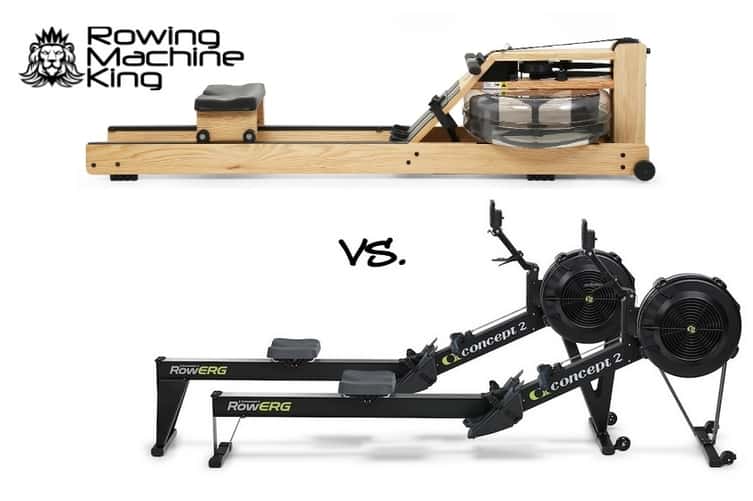
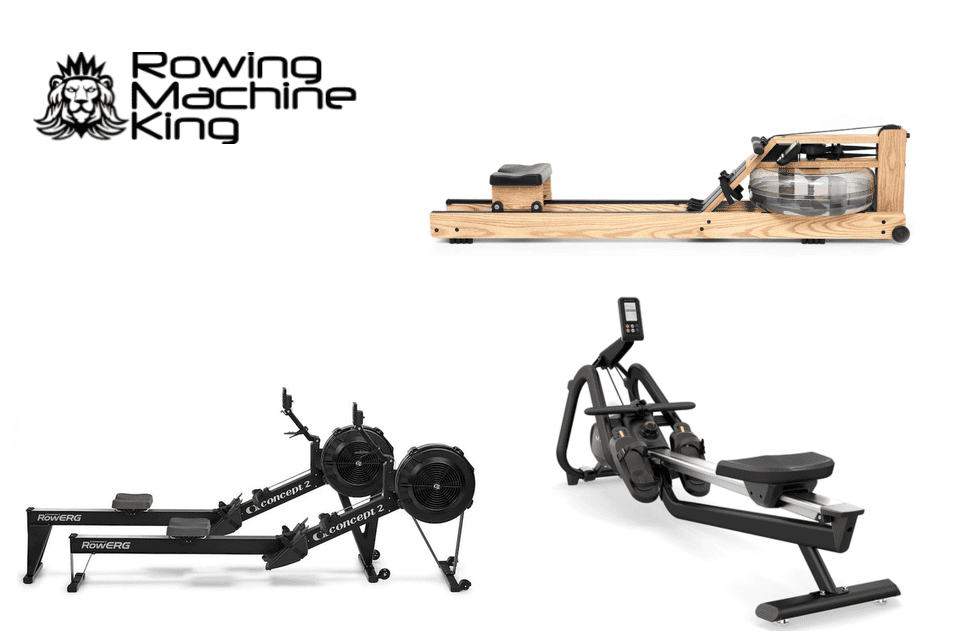
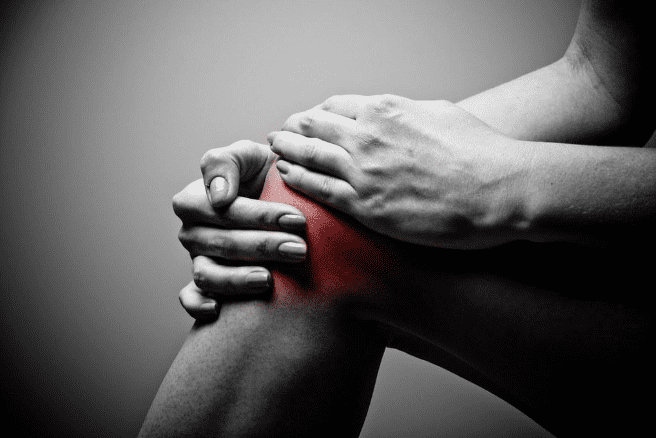
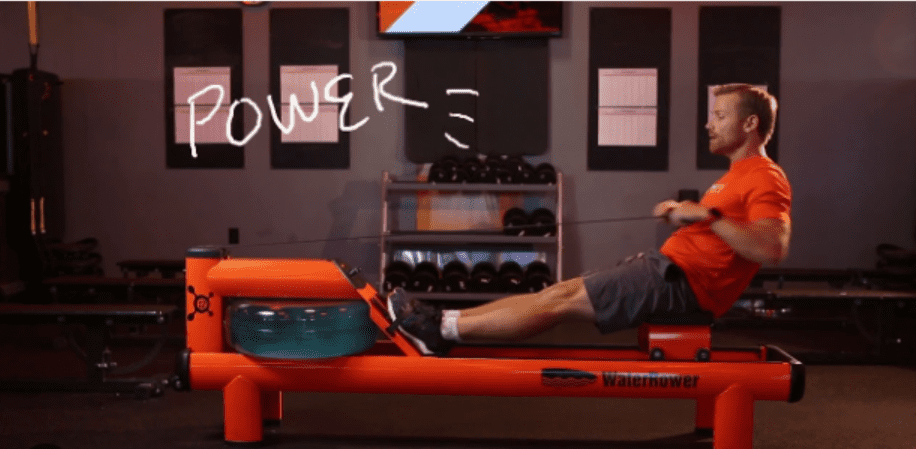
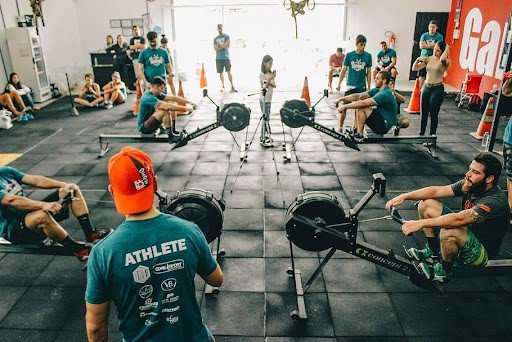
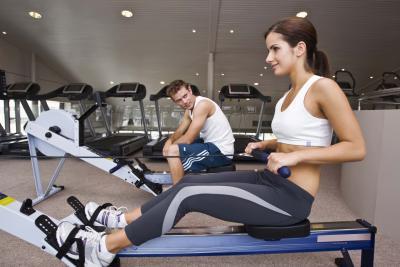
Best advise ever! I moved my rower from one room to the other because of the sunlight and just didn’t think of what could happen! The tips above are super!
Thank you for the kind words, Oliver!
Hi! My waterrower sat in sunlight at someone’s house, and began to grow algae/turn green. i’ve siphoned the water twice, and even though the water itself is clear now, I have stuck-on algae remnants that are just not budging. I put in some microbial algae clean from pondcare… but now learning that’s probably more of a maintainer. I’ve now put in about 3/4 gallon of white vinegar with about 4 gallons of water already in the tank. Wondering how long to wait on that, before trying baking soda.
Any advice for the stuck-on green stuff? I just want to kill it! my understanding is dead algae turns white/grey. is that true of the stuck-on residue? Obviously I can’t get a brush down into the tank, so looking for ways to dislodge it.
Thanks!
Hi LB – I think you are doing all the right things! Unfortunately, that green algae is such a pain to kill or clean off. Depending on where it is in the tank you might be able to use something like a wire coat hanger or flexible material (something like gooseneck material) with cloth taped to the end to try to reach it.
I bought the Turbopump that you linked to but it won’t work to empty the tank because the wand is too large to fit through the hole.
Very disappointed and feel like you should advise your readers that, at best, the battery operated pump will only make filling the tank faster… but you’ll definitely need a different siphon tool to drain the tank.
Hi Elizabeth – I’m very sorry to hear that. Amazon is very good with returns so you should be able to get your money back. We have a few writers for the blog so I will see what water rowing machine the writer owns and fix the post.
What model rowing machine do you own?
Hi Edwin,
Thanks for your response. I have the WaterRower Club that I purchased new about a little over a year ago.
Unfortunately, I ordered the pump quite awhile ago so beyond the return window… got busy with moving and the holidays so that’s on me. However, just felt readers should know.
That said, I really don’t understand why WaterRower makes it so difficult to access their tank and empty it sufficiently. A few tweaks (such as making the water hole accessible through the top and bottom boards of the pulley assembly would make a big difference (since it would be a straight shot rather than trying to angle the stiff tube between the boards)… as well as enlarging the water hole just a bit to accommodate battery-powered pumps.
That said, I have found that I can use a Koehler Enterprises manual pump that has flexible tubing (15 bucks on Amazon) and if I stand the WaterRower upright, can extract more water faster than the cheap manual pump that came with the rower which is prone to breaking due to having to force the stiff end to bend between the boards. If you do use the Koehler pump, though, just be aware that the tubing will come curled up on itself and you have to soak it for a few minutes in boiling water for it to straighten out enough to be effective.
(https://www.amazon.com/gp/product/B0181EDCZ6)
One last question as long as I have your attention: A reader above mentioned that she was using vinegar to try to kill the algae but didn’t see vinegar listed anywhere in the article… just wanted to confirm that vinegar is safe to use on polycarbonate.
Thank you again for your time!
Hi Elizabeth, I have not used vinegar before as I’ve read in some places it can be too acidic. If you diluted it a bit and made sure to thoroughly rinse afterward, then it might be worth a try as a last resort. Maybe try replying to LB to see how the vinegar worked out?
Just purchased a water rower and would like to know how many purification tablets to add to the tank
Thx
I’ve got what looks like rust buildup inside an older tank, little flakes and brown scaling. What about using CLR to clean the tank? I can’t find anything on the internet that says CLR doesn’t like polycarbonate, and for those of us with hard water CLR would help with that as well. Any thoughts?